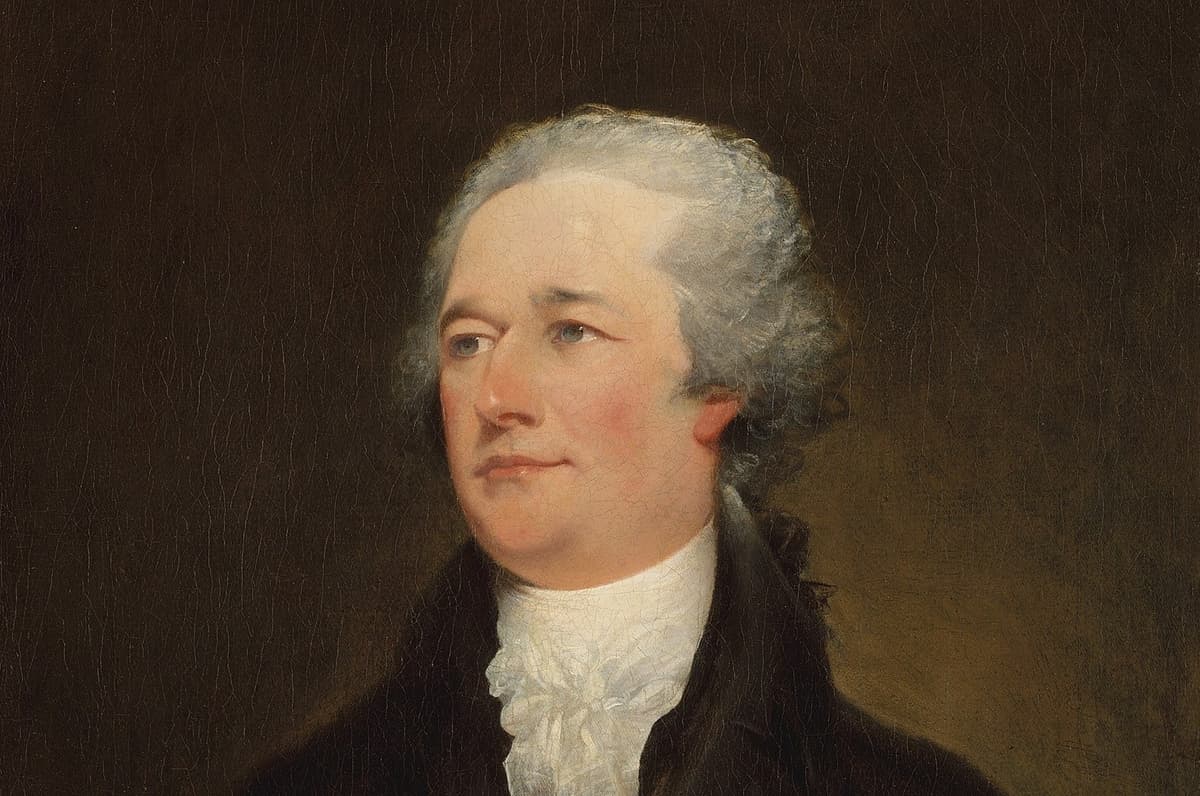Trump, Like Him or Not, Embodies Hamilton’s Ideal of ‘Energy in the Executive’
No one can seriously argue that this is a passive presidency.

Whatever else you want to say about him, President Trump has what Alexander Hamilton in 70 Federalist called “energy in the executive.” Announcing a peace plan for Israel and Hamas, ordering the dispatch of federal troops to protect immigration enforcement personnel in “sanctuary” states, authorizing his budget director to use reorganization powers available after Senate Democrats shut down the government, and announcing a pediatric cancer initiative.
No one can seriously argue that this is a passive presidency, though some may say that Mr. Trump is not promoting “the steady administration of the laws” and the “protection of property” that Hamilton argued is what an energetic executive should provide.
Yet the appropriate question in the off-year elections to be held 13 months from now and in the 2028 election in which Mr. Trump is ineligible to seek another term is, compared to what? Opposition to Mr. Trump, distaste for his personal style, dismay at his ignorance, or ignoring of norms of political politeness — such responses don’t seem to be producing a surge of support for his Democratic opponents.
Striking evidence of this comes in a Reuters/Ipsos nationwide poll conducted September 19 to 21. On 11 different issues, adults were asked which party has the “better plan.” That’s just a bit different from the usual question wording.
Pluralities preferred Republicans’ plans on seven of the 11 issues. Democrats’ plans were preferred by significant margins only on health care, women’s rights, and the environment. In a country that re-elected Mr. Trump by a 50 percent to 48 percent popular vote margin, preferences for Republicans were lopsided on some issues: crime (40 percent to 20 percent), immigration (40 percent to 22 percent), foreign conflicts (35 percent to 22 percent), and the United States economy (34 percent to 24 percent).
CNN polling analyst Harry Enten, reporting on similar numbers on crime, immigration, and the economy in a CNN poll, exclaimed, “What are you doing, Democrats? Goodness gracious.”
And no doubt that when respondents are referring to Republicans, they’re referring to Mr. Trump, who, despite his lame-duck status, dominates his party to an extent seldom seen. Note also that Republicans were narrowly favored on “political extremism” and were behind Democrats by only a statistically insignificant 2 percent on “respect for democracy.”
Even more than in the 2024 campaign, Americans have had recent experience with both Democratic and Republican administrations, and there’s not much question that, despite his idiosyncrasies, they prefer Mr. Trump’s to President Biden’s.
There is evidence that some critical bloc of voters feels Mr. Trump goes too far on some trademark policies. His heartfelt imposition of tariffs in April sparked negative responses from voters and markets.
His seemingly careless selection of tariff percentages recalls the insouciance of President Franklin Roosevelt setting an arbitrary price for gold every morning for months in 1933.
Yet just as Roosevelt was relieved of an unpopular and unworkable policy when the Supreme Court ruled the National Recovery Act unconstitutional by 9-0 in 1935, Mr. Trump may be bailed out of the unpopularity of his tariffs if the Supreme Court rules, as seems possible, that they aren’t authorized by the International Emergency Economic Powers Act.
Democrats are in the uncomfortable position of appeasing what has become the party’s dominant constituency, affluent white college graduates, many of whom suffer from what their critics call Trump derangement syndrome and who demand unstinting adherence to positions overwhelmingly unpopular with the wider electorate.
One of those is immigration. Mr. Trump is taking an aggressive step in stationing federal troops in states where mobs threaten Immigration and Customs Enforcement personnel enforcing federal law. Yet the “sanctuary” state and city policies instituted by Democratic officials and supported by Democrats’ upscale core constituency are an aggressive attempt to counteract the Constitution’s supremacy clause.
There’s an echo here of President Jackson’s dispatch of federal troops to the South Carolina border when John C. Calhoun’s acolytes tried to nullify federal law. Some voters may find Mr. Trump’s act excessive but reject Democrats’ covert support of what amounts to “open borders” immigration policy.
Similarly, affluent liberals’ adherence to every jot and tittle of transgender policy orthodoxy puts Democratic candidates such as the Virginia governor nominee, Abigail Spanberger, in the politically perilous position of refusing to oppose biological boys in girls’ sports.
She’s obviously catering to a core constituency for whom, as I wrote last month, “this was just another case for showing acceptance of a previously scorned minority. Some may have regretted that they didn’t come out earlier for gay rights or same-sex marriage and saw this issue in the same light.” Interestingly, that’s almost identical to the analysis presented by Representative Sarah McBride, Democrat of Delaware, the first transgender member of Congress, in an interview with the New York Times’s Ezra Klein.
There’s an uncomfortable element of snobbery here, with some high-education voters proud they’re more tolerant than the vulgar masses, and some indulging a luxury belief they won’t be discommoded by biological boys in girls’ sports or biological men in women’s prisons.
Meanwhile, Mr. Trump in the past week has sharply changed his foreign policy on Ukraine by supporting long-distance responses and clampdowns on Russian oil and gas sales, and on Israel and Hamas, by presenting a peace plan, getting Israel’s endorsement, and promising to back it strongly if Hamas doesn’t stop the fighting and free the hostages. It’s hard to deny that we see a lot of energy in the executive.
Creators.com

